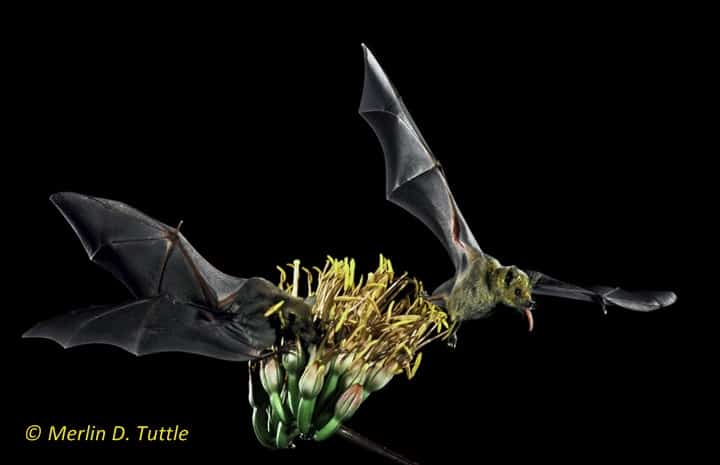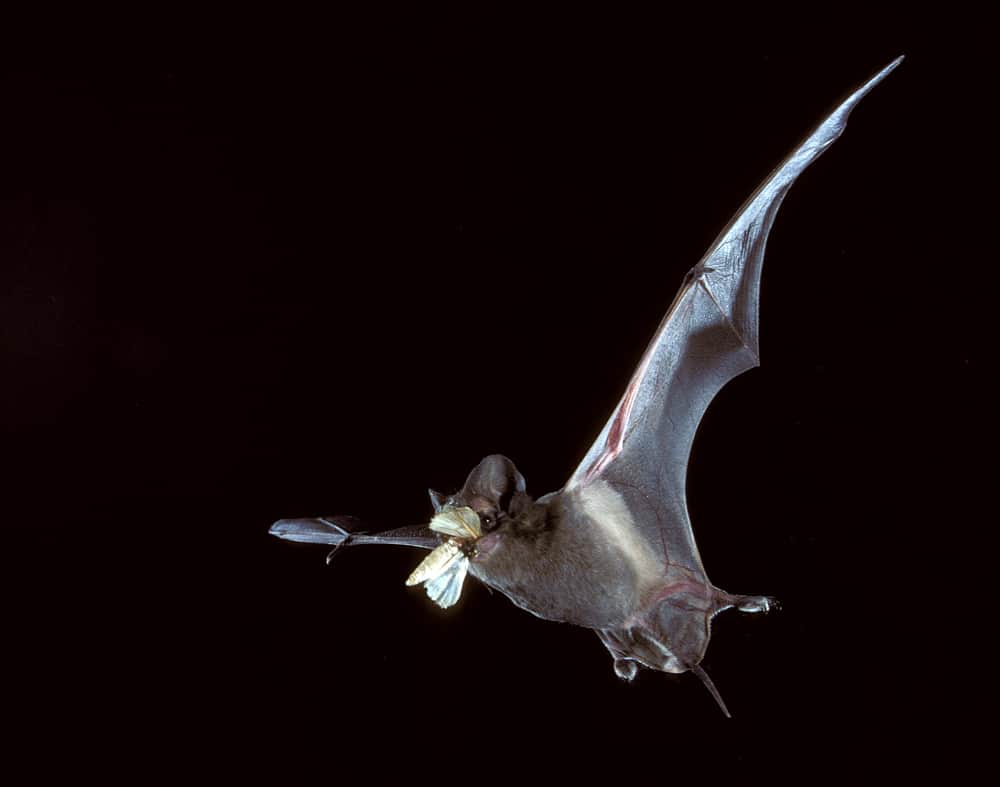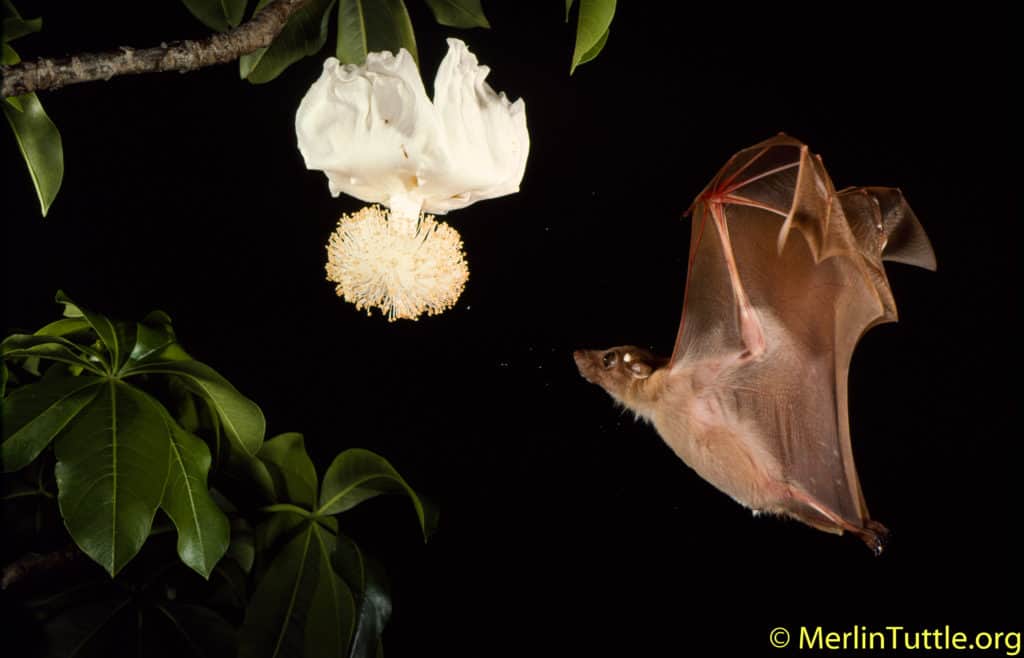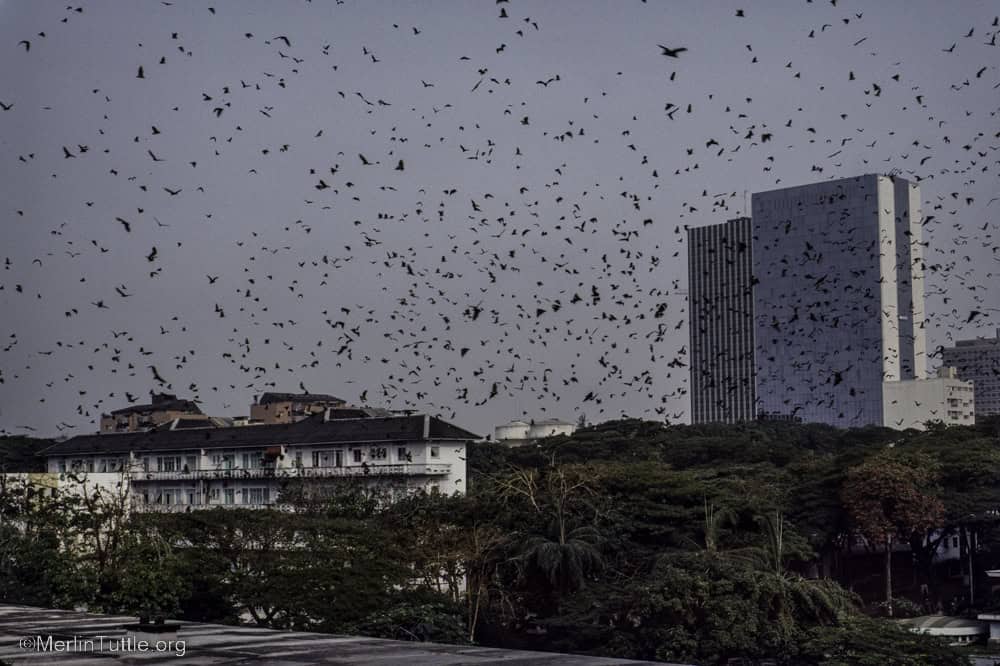A Captivating New Book about the World of Bats
Bats are often misunderstood, but a new book is helping change that. In The Genius Bat: The Secret Life of the Only Flying Mammal, neuroscientist
This summer saw the worst avalanche of grossly exaggerated disease speculation ever launched against bats. While seemingly countless publications world-wide needlessly frightened millions of readers, Mongabay journalist, John Cannon, investigated and bravely countered the tide in his article, “Bats and viruses: Beating back a bad reputation,” published August 29.
Mongabay is one of the world’s leading environmental websites. It reaches 28 million readers in nine languages annually, making its defense of bats especially helpful at a time when bats are facing so much scary misinformation. We’ve listed actions you can take to share your thanks at the end of this post.



This summer’s negative campaign began with publication of a seemingly benign paper in Virus Evolution, titled “Global patterns in coronavirus diversity.” However, it soon spawned author interviews and titles like “Bats are global reservoir for deadly coronaviruses” in the news section of the journal Nature. Then, “Where will the next Pandemic come from? Likely from bats,” in The Wall Street Journal and “Bats are the number one carriers of disease” in Time. Not even the Austin American-Statesman (which supports a bat mascot and bat viewing area at the famous Congress Avenue Bridge) could resist! Its story was titled, “Bats could be source of next pandemic. The Mongabay article includes a link to my response.
Our relationship with Mongabay editor, Rebecca Kessler, began when our loyal “bat fans” politely informed her that, Mongabay’s well-intended April 27, 2016 article, titled “Bat mortality no longer sustainable, global review finds,” contained misleading information regarding bats as sources for scary diseases. She promptly thanked us and published a correction.

We now especially thank Rebecca, not only for Mongabay’s current article in defense of bats, but also for publishing Mike Gaworecki’s August 14, 2017 article, titled “Nearly one-third of bat species in North America are on the decline.” The article reported that scientists at NatureServe, an international biodiversity NGO, have determined bats to be the most threatened warm-blooded animals in North America.
Choose any or all means of contact to reach out and share your THANKS for this positive press in your own words.
Email the editor. Be sure to include the article and author information.
Thank them and share the article link on Facebook and Twitter
Add Feedback for John Cannon, the author
Add comments at the bottom of the article
Love our content? Support us by sharing it!
Bats are often misunderstood, but a new book is helping change that. In The Genius Bat: The Secret Life of the Only Flying Mammal, neuroscientist
Our fourth annual Join the Nightlife workshop, held in Central Texas, brought together conservationists, researchers, and farmers from around the U.S. to explore the many
Bats are the longest-lived mammals for their size, with species like the little brown bat (Myotis lucifugus) surviving over 30 years in the wild. Even
Can we afford to lose bats? A recent study by Eyal Frank of the University of Chicago reveals that the dramatic decline in U.S. bat
2024 © Merlin Tuttle’s Bat Conservation. All rights reserved.
Daniel Hargreaves is a lifelong bat conservationist who has worked globally to facilitate progress, including co-founding Trinibats, a non-profit bat conservation organization in Trinidad. He has organized and led field workshops worldwide, including five for MTBC. Following a long and successful career in business, he now manages a network of bat reserves for the Vincent Wildlife Trust in the UK, supervising research and development of new and innovative conservation techniques. Daniel also is one of the world’s premier bat photographers.
Madelline Mathis has a degree in environmental studies from Rollins College and a passion for wildlife conservation. She is an outstanding nature photographer who has worked extensively with Merlin and other MTBC staff studying and photographing bats in Mozambique, Cuba, Costa Rica, and Texas. Following college graduation, she was employed as an environmental specialist for the Florida Department of Environmental Protection. She subsequently founded the Florida chapter of the International DarkSky Association and currently serves on the board of DarkSky Texas. She also serves on the board of Houston Wilderness and was appointed to the Austin Water Resource Community Planning Task Force.
Michael Lazari Karapetian has over twenty years of investment management experience. He has a degree in business management, is a certified NBA agent, and gained early experience as a money manager for the Bank of America where he established model portfolios for high-net-worth clients. In 2003 he founded Lazari Capital Management, Inc. and Lazari Asset Management, Inc. He is President and CIO of both and manages over a half a billion in assets. In his personal time he champions philanthropic causes. He serves on the board of Moravian College and has a strong affinity for wildlife, both funding and volunteering on behalf of endangered species.